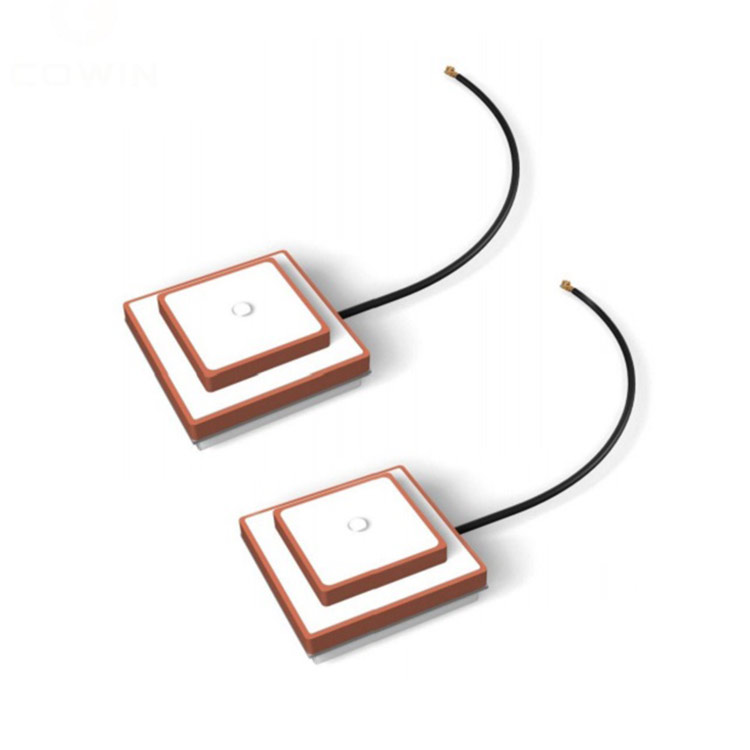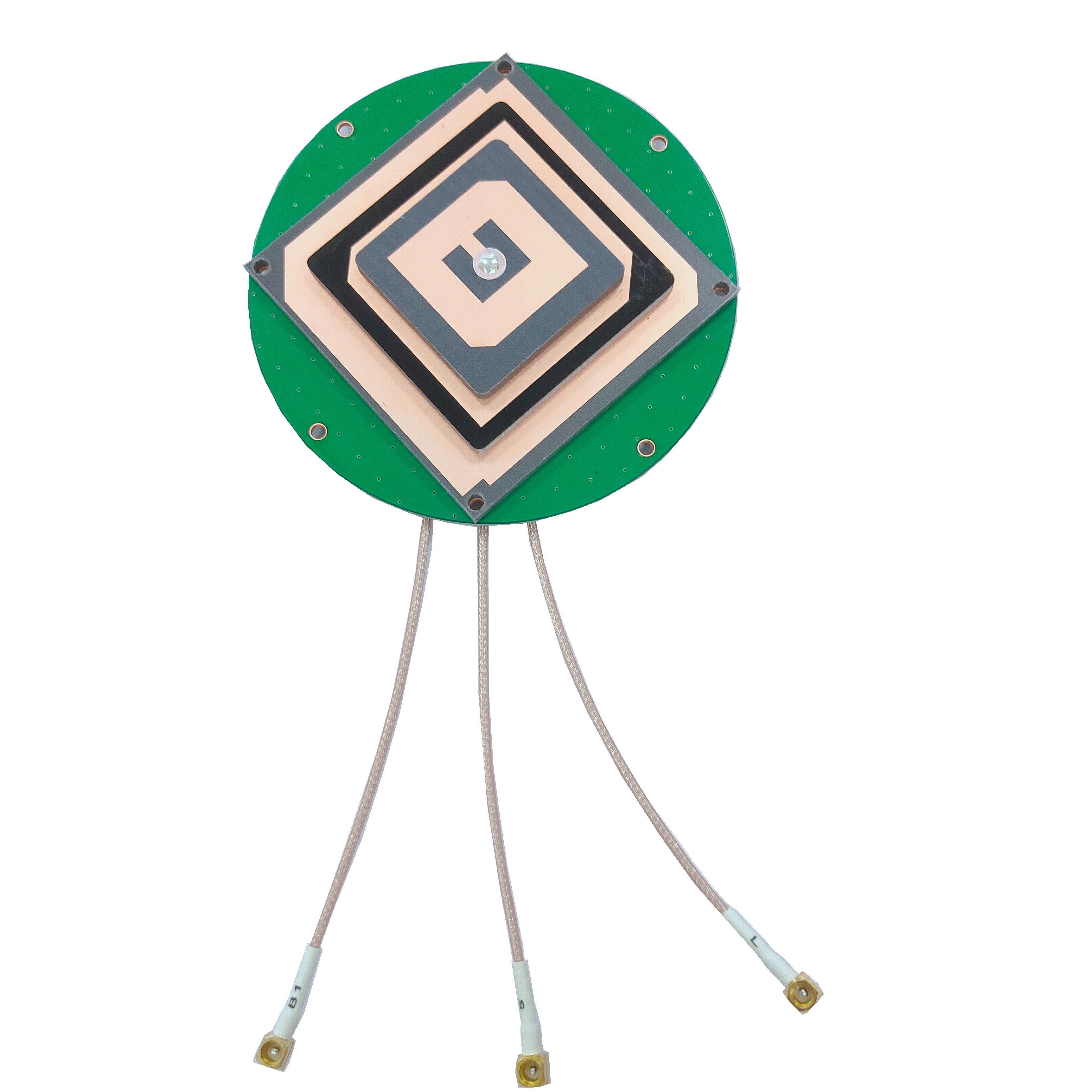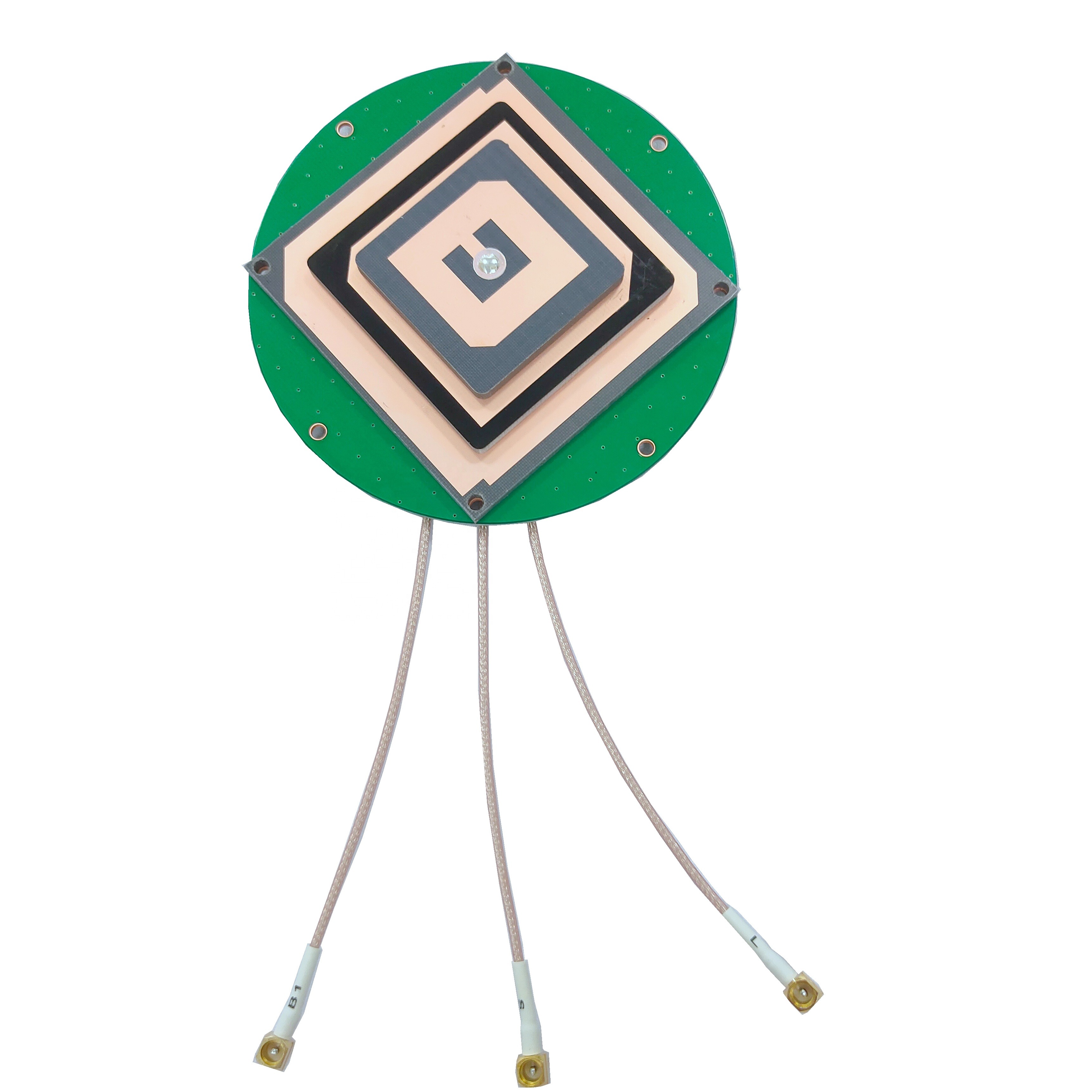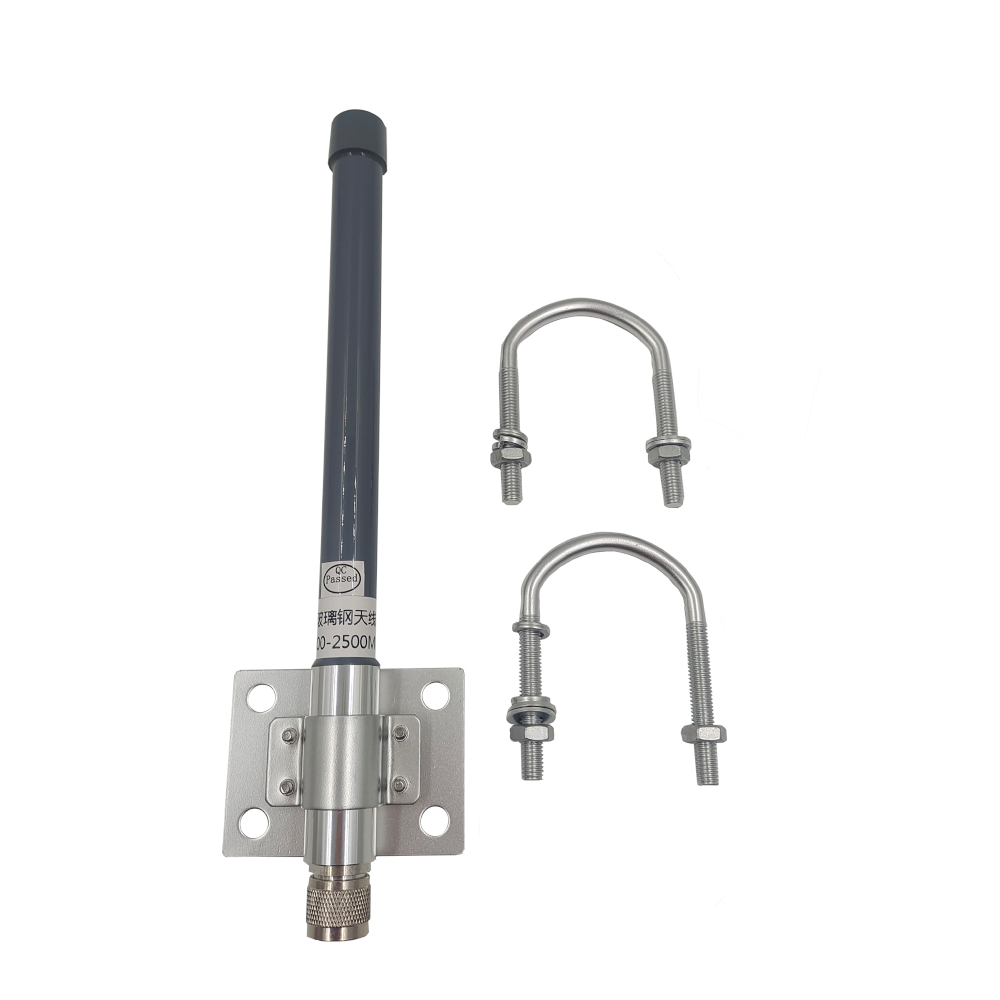overview
GNSS, which encompasses multiple satellite constellations such as GPS (United States), GLONASS (Russia), Galileo (Europe), and BeiDou (China), provides the fundamental infrastructure for global positioning. By receiving signals from these satellites, devices can determine their precise location on Earth's surface. However, traditional GNSS antennas often come with limitations in size and integration, making them unsuitable for many modern devices that require a more compact and streamlined design.
Compact embedded GNSS antenna modules address these limitations by combining high - performance antenna elements with miniaturized signal processing circuits. They are designed to fit into the confined spaces of various devices, including wearable electronics, smartphones, asset trackers, and Internet of Things (IoT) sensors. The integration of antenna and signal processing functions within a single module simplifies the design process for device manufacturers, reduces the overall size and weight of the end - product, and improves the reliability of the positioning system.
The performance of compact embedded GNSS antenna modules is characterized by their ability to receive signals from multiple GNSS constellations and frequency bands, ensuring accurate positioning even in challenging environments. They are engineered to operate efficiently in the presence of interference, signal blockage, and multipath effects, which are common in urban canyons, indoor - outdoor transition areas, and other complex environments. As the demand for location - based services continues to grow, driven by applications such as navigation, fleet management, and environmental monitoring, compact embedded GNSS antenna modules will play an increasingly crucial role in enabling seamless and accurate positioning across a wide range of devices and industries.
Design and Construction
The design and construction of compact embedded GNSS antenna modules require a delicate balance of miniaturization, performance optimization, and integration capabilities. Every aspect of the module, from the selection of materials to the layout of components, is carefully considered to meet the stringent requirements of modern devices.
Antenna Element Design
The antenna element is the heart of the compact embedded GNSS antenna module, responsible for capturing the weak signals transmitted by GNSS satellites. Microstrip antenna designs are predominantly used due to their compact size, low profile, and ease of integration into printed circuit boards (PCBs). A microstrip antenna typically consists of a metallic patch, usually made of copper or gold, placed on a dielectric substrate with a ground plane beneath.
For multi - band operation, which is essential for receiving signals from different GNSS constellations and frequency bands, the design of the metallic patch becomes more complex. Advanced electromagnetic simulation tools are employed to optimize the shape, size, and configuration of the patch to resonate at multiple frequencies simultaneously. Techniques such as fractal geometries, meandering lines, and slot - loading are often used to increase the electrical length of the patch without significantly increasing its physical size, enabling it to operate efficiently across the L1 (1.575 GHz), L2 (1.227 GHz), L5 (1.176 GHz) bands of GPS and corresponding bands of other constellations.
The choice of dielectric substrate is critical for the performance of the microstrip antenna. Substrates with high dielectric constants can reduce the size of the antenna element but may also introduce higher losses. Therefore, materials with a balanced combination of dielectric constant, loss tangent, and mechanical stability are selected. Ceramic - based substrates are popular due to their high dielectric constant and excellent thermal and mechanical properties, while flexible substrates like polyimide are suitable for applications where the antenna needs to conform to irregular surfaces.
Signal Processing Component Integration
Compact embedded GNSS antenna modules integrate essential signal processing components to enhance the received signal quality and prepare it for further processing by the device's GNSS receiver. A low - noise amplifier (LNA) is a key component, which boosts the weak GNSS signals to a level suitable for further processing while minimizing the addition of noise. The LNA is carefully selected for its high gain, low noise figure, and wide bandwidth to ensure effective amplification of signals across multiple frequency bands.
Filters are also incorporated into the module to reject unwanted frequencies and interference. Band - pass filters are used to allow only the frequencies within the desired GNSS bands to pass through while attenuating frequencies outside these bands. Notch filters may be added to specifically target and suppress certain frequencies that are known to cause interference, such as those from nearby wireless communication devices.
In addition, some advanced modules may include analog - to - digital converters (ADCs) to convert the analog GNSS signals into digital format for easier processing by the receiver. The integration of these components requires careful layout design on the PCB to minimize signal losses, crosstalk, and interference between different components.
Packaging and Integration
The packaging of compact embedded GNSS antenna modules is designed to protect the internal components from physical damage, environmental factors, and electromagnetic interference. The module is typically encapsulated in a small, hermetically - sealed package made of materials such as plastic or ceramic. Plastic packages are cost - effective and offer good protection against moisture and dust, while ceramic packages provide better thermal and electrical performance, making them suitable for high - performance applications.
For integration into host devices, the module is designed with a standard interface, such as a surface - mount technology (SMT) footprint or a connector - based interface. SMT - type modules can be directly soldered onto the PCB of the host device, reducing the overall size and cost of the assembly. Connector - based modules offer more flexibility in terms of installation and replacement but may add a small amount of size and cost. The design of the interface also takes into account factors such as signal integrity, power supply requirements, and communication protocols to ensure seamless integration with the host device's GNSS receiver and other components.
Working Principles
The working principles of compact embedded GNSS antenna modules involve a series of coordinated processes that enable the module to capture, process, and transmit GNSS signals accurately, ultimately providing the host device with precise positioning information.
Signal Reception
The operation of the module begins with the antenna element capturing the weak radio - frequency signals transmitted by GNSS satellites. These signals, which carry information about the satellite's position and time, travel through the Earth's atmosphere before reaching the antenna. The microstrip antenna element, designed to resonate at the GNSS frequencies, efficiently couples with the incoming signals and converts the electromagnetic energy of the GNSS signals into electrical signals.
When the frequency of the incoming GNSS signals matches the resonant frequency of the antenna element, a resonance effect occurs. This resonance enhances the antenna's ability to absorb the energy of the signals, generating electrical currents that represent the received GNSS signals. However, in real - world scenarios, these initial signals are often subject to various impairments, including ionospheric delays, tropospheric delays, multipath interference, and signal blockage. For example, in urban areas, tall buildings can cause signal reflections, leading to multipath interference, while in areas with high solar activity, ionospheric delays can distort the signals.
Signal Processing
The weak electrical signals received by the antenna element are then processed by the integrated signal processing components within the module. First, the signals pass through a low - noise amplifier (LNA), which boosts their strength to a level suitable for further processing while keeping the added noise to a minimum. This amplification is crucial because the signals received from the satellites are extremely weak, and any additional noise could significantly degrade the accuracy of the positioning calculations performed by the GNSS receiver.
After amplification, the signals pass through filters. Band - pass filters are used to isolate the frequencies within the desired GNSS bands, rejecting unwanted frequencies and interference from other radio - frequency sources. Notch filters, if present, target and suppress specific frequencies that are known to cause interference, further improving the quality of the received signals. Some modules may also perform analog - to - digital conversion at this stage, converting the analog signals into digital format for easier processing by the host device's GNSS receiver.
Signal Transmission and Position Calculation
The processed signals are then transmitted from the module to the host device's GNSS receiver. The receiver uses these signals, along with correction data from reference stations in the case of Real - Time Kinematic (RTK) positioning, to calculate the precise position of the device. The receiver first acquires and tracks the signals from multiple satellites, extracting the navigation data, which includes information about the satellite's position, time, and orbital parameters.
Using the principle of trilateration or multilateration, the receiver calculates the distance between the device and each satellite based on the time it takes for the signals to travel from the satellite to the device. By knowing the positions of the satellites and the distances to them, the receiver can determine the precise location of the device on Earth's surface, along with other information such as altitude, speed, and heading. The accurate and clean signals provided by the compact embedded GNSS antenna module, combined with the processing capabilities of the GNSS receiver, enable the host device to perform location - based functions with high precision.
Advantages and Challenges
-
Advantages
One of the most significant advantages of compact embedded GNSS antenna modules is their small size and lightweight design. Their compact form factor allows for easy integration into a wide range of devices, including small - form - factor IoT sensors, wearable devices, and smartphones. This miniaturization not only saves space within the device but also reduces the overall weight, which is crucial for applications where size and weight are critical factors, such as in portable and wearable electronics.
These modules offer good compatibility with multiple GNSS constellations and frequency bands. By being able to receive signals from different constellations, they provide greater redundancy and improved signal availability. This ensures that the host device can maintain accurate positioning even in areas where the signals from one constellation may be weak or unavailable. The multi - band operation also helps in mitigating errors caused by ionospheric delays and multipath interference, enhancing the overall accuracy and reliability of the positioning system.
Compact embedded GNSS antenna modules simplify the design process for device manufacturers. Instead of having to design and integrate separate antenna and signal processing components, manufacturers can use these pre - integrated modules, reducing the development time and cost. The standard interfaces of these modules also make it easier to integrate them with different host devices, further streamlining the manufacturing process.
Challenges
Despite their numerous advantages, compact embedded GNSS antenna modules face several challenges. One of the primary challenges is achieving a balance between size and performance. Reducing the size of the module often leads to a decrease in performance, such as reduced gain and increased signal losses. Designers need to carefully optimize the antenna design, component selection, and layout to ensure that the module meets the performance requirements while maintaining a compact form factor. This requires advanced knowledge of electromagnetic theory and the use of sophisticated simulation tools to fine - tune the module's parameters.
Another challenge is related to electromagnetic interference (EMI). Compact embedded GNSS antenna modules are often integrated into devices that contain multiple electronic components, such as microprocessors, wireless communication modules, and power supplies, which can generate electromagnetic fields that interfere with the operation of the GNSS antenna. Shielding the module from these sources of interference while keeping the module's size in check is a complex task. Additionally, external sources of EMI, such as nearby communication towers and electrical equipment, can also degrade the performance of the module.
Power consumption is also a concern, especially for battery - powered devices. The operation of the antenna and the integrated signal processing components consumes a certain amount of power. Reducing the power consumption of the module without sacrificing performance is crucial for extending the battery life of the host device. This requires the use of low - power components and the implementation of power - saving techniques, such as sleep modes and dynamic power management.
Applications and Future Trends
-
Applications
Compact embedded GNSS antenna modules have a wide range of applications across various industries. In the consumer electronics industry, they are integrated into smartphones, tablets, and wearable devices, enabling features such as navigation, location - based services, and fitness tracking. The small size and lightweight design of these modules make them ideal for these devices, where space and weight are at a premium.
In the IoT sector, compact embedded GNSS antenna modules are used in asset tracking devices, environmental sensors, and smart city applications. Asset tracking devices equipped with these modules can accurately monitor the location of valuable assets, such as vehicles, containers, and equipment, enabling efficient logistics management and theft prevention. Environmental sensors with GNSS capabilities can provide accurate location information along with environmental data, helping in environmental monitoring and research. In smart city applications, these modules can be used in traffic management systems, waste collection monitoring, and public safety devices to improve urban services and management.
In the automotive industry, compact embedded GNSS antenna modules are used for in - vehicle navigation systems, vehicle tracking, and advanced driver - assistance systems (ADAS). They provide accurate positioning information for navigation, help in fleet management by tracking the location of vehicles, and contribute to the operation of ADAS features such as lane - keeping assist and adaptive cruise control.
Future Trends
Looking ahead, several future trends are expected to shape the development of compact embedded GNSS antenna modules. One trend is the further miniaturization of these modules. As technology advances, new materials and manufacturing techniques, such as nanotechnology and 3D printing, will be explored to reduce the size of the modules even further without sacrificing performance. This will enable the integration of GNSS functionality into even smaller and more lightweight devices, opening up new application possibilities.
The integration of artificial intelligence (AI) and machine learning (ML) algorithms with compact embedded GNSS antenna modules is an emerging trend. AI and ML can be used to optimize the performance of the modules in real - time. These algorithms can analyze the received signals, detect changes in the signal environment, and adjust the module's operation parameters, such as gain, filtering, and interference mitigation, to adapt to different conditions. For example, AI can be used to predict and mitigate the effects of interference, improving the accuracy and reliability of the positioning system.
Advancements in communication technologies, such as 5G and the Internet of Things (IoT), will also impact the design and use of compact embedded GNSS antenna modules. These new technologies will require seamless integration of GNSS positioning with other communication and data - collection systems. Compact embedded GNSS antenna modules will need to be designed to work in harmony with 5G and IoT systems, enabling applications such as global IoT device tracking, real - time location - based services, and enhanced navigation capabilities.
There is also a trend towards the development of multi - functional modules. Future compact embedded GNSS antenna modules may integrate additional functions, such as wireless communication capabilities (e.g., Wi - Fi, Bluetooth, 5G), sensor integration, or energy harvesting. This integration will reduce the number of components required in the device, saving space and potentially reducing costs.
Conclusion
Compact embedded GNSS antenna modules have become essential components in modern devices, enabling accurate positioning in a wide range of applications. Their compact size, compatibility with multiple GNSS constellations, and ease of integration make them suitable for various industries, from consumer electronics and IoT to automotive.
However, challenges such as balancing size and performance, managing electromagnetic interference, and reducing power consumption need to be addressed to further promote their widespread adoption. As technology continues to evolve, future trends such as miniaturization, the integration of AI and ML, compatibility with new communication technologies, and the development of multi - functional modules offer great potential for enhancing the performance and capabilities of compact embedded GNSS antenna modules. By overcoming these challenges and embracing these trends, these modules will continue to play a crucial role in enabling seamless and accurate location - based services in the future.




































































 Language
Language
 En
En Cn
Cn Korean
Korean

 Home >
Home > 








 18665803017 (Macro)
18665803017 (Macro)













